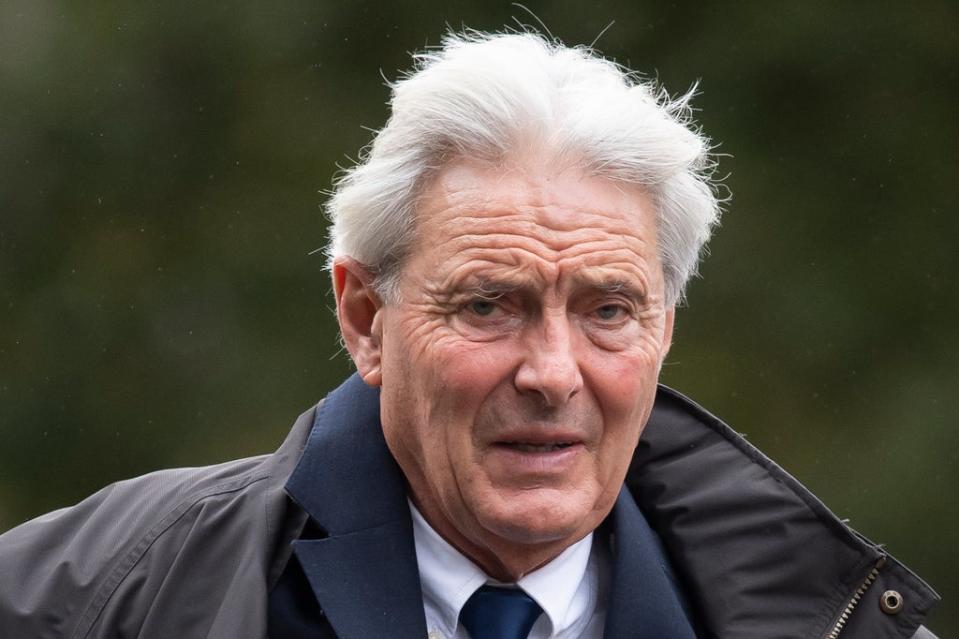Emiliano Sala: Businessman who organised fatal flight found guilty of endangering safety of plane

- Oops!Something went wrong.Please try again later.
The businessman who organised the flight that crashed and killed footballer Emiliano Sala has been found guilty of endangering the safety of an aircraft.
David Henderson, 67, was accused of failing to follow safety regulations, which resulted in the death of both Sala, 28, and pilot of the plane David Ibbotson when it crashed on 21 January 2019 into the English Channel.
The flight left Nantes and was heading to Wales after the Argentine footballer completed a £15m move to play for Cardiff City.
Sala’s body was recovered a month after the crash, but the body of pilot Mr Ibbotson is yet to be found.
Mr Henderson had denied having acted in a reckless or a negligent manner which would have been likely to endanger the plane the two men were travelling in. However, a jury found him guilty of the charge by a majority verdict of 10 to two.
A trial at Cardiff Crown Court previously heard that the Piper Malibu N264DB plane chosen to carry Sala was not authorised to carry commercial passengers.
Henderson was also accused of having employed Mr Ibbotson as the pilot while being aware that he did not have a commercial pilot’s licence. As well as this, Mr Ibbotson’s rating to fly the N264DB plane had expired and he was not qualified to fly at night.
Prosecutor Martin Goudie QC previously told the court that Henderson had breached numerous regulations as he attempted to transport Sala to Cardiff. Mr Goudie added that the businessman ran an “incompetent, undocumented, risk creating and dishonest” organisation.

He explained: “Mr Ibbotson was not qualified to conduct these flights. Breach after breach after breach, all known about and encouraged by Henderson. The approach to them is one of risk taking, not risk assessment.”
Defence barrister Stephen Spence claimed however that his client’s transgressions were due to a “paperwork issue”. He also suggested that although the pilot did not have a commercial licence, it did not have an effect on whether or not he was able to fly the plane.
Henderson himself went on to add that it is “always the pilot to ensure the safety of a flight”.
It was also revealed in court that just moments after discovering that the plane had gone down, Henderson texted various people telling them to stay silent and warning that it would “open a can of worms”, the jury was told.
The father-of-three and former RAF officer admitted in court he had feared an investigation into his business dealings.
Mr Goudie said Henderson had created a culture of breaching the air navigation regulations among the pilots he hired.
The owner of the plane, Fay Keely, had told Henderson not to allow Mr Ibbotson to pilot the plane again after being contacted by the Civil Aviation Authority (CAA) about two airspace infringements he had committed.
Despite this, Henderson allowed Mr Ibbotson to continue flying, and in a message to the pilot said: “We both have an opportunity to make money out of the business model but not if we upset clients or draw the attention of the CAA.”
Henderson did not have a Foreign Carrier Permit (FCP) which was needed to fly passengers in the American plane, or an Air Operator Certificate (AOC), which he was required to obtain.
And during the trial Mr Goudie accused Henderson of lying in his statements to investigators, and of running a “cowboy outfit” after questioning the defendant over why he failed to keep basic information on his pilots.
Judge Mr Justice Foxton granted Henderson bail to return to be sentenced for both offences on November 12. He faces maximum sentences of five years imprisonment for endangering the aircraft and two years for the lesser charge.

